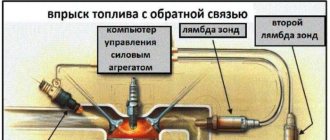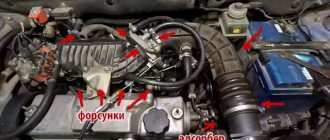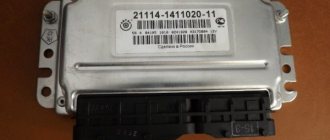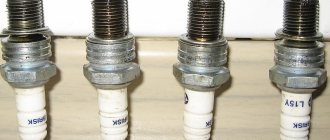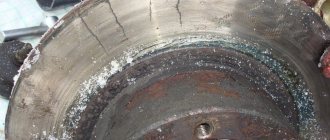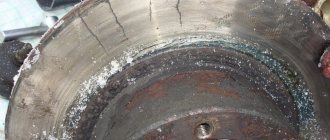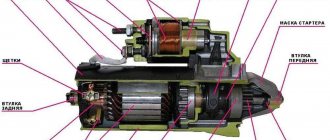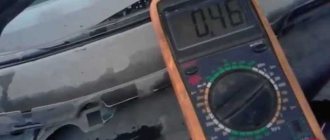This article will tell you everything you need to know about the P0171 code. You will also learn how to diagnose and fix the error yourself in the easiest and fastest way.
There is a lot of misinformation about the P0171 code and a lot of dubious advice on how to fix it. In this article, we will tell you how to properly diagnose this error code in order to find solutions as quickly as possible.
What does error code P0171 mean?
P0171 is triggered when the front oxygen sensor detects a lean mixture. This can be either a short-term or a permanent lean mixture.
The front oxygen sensors regulate the fuel mixture that leaves the engine. If the oxygen sensor detects a slight lean or rich mixture, it sends a signal to the engine control unit to adjust the mixture in the next combustion cycle to obtain the ideal fuel mixture for better fuel economy.
Oxygen sensors typically have a range of +/- 15% to adjust the fuel mixture.
If the fuel mixture is outside this range, the O2 sensor will not be able to adjust the mixture. The engine control unit (ECU) will initiate and store a fault code in memory. If the mixture is lean, error code P0171 will be triggered.
If the mixture is rich, then you will have a P0172 code. If you have a V-twin engine or two O2 sensors, you may also see a P0174 code, which means the mixture is also lean, but on the second cylinder bank.
Fuel system malfunction
Other causes of a lean mixture on the injector are due to improper operation of the vehicle's fuel system. As a rule, operational disruptions occur due to low-quality fuel, which is filled at little-known gas stations. One of the options for unstable engine operation and the formation of a lean mixture is clogged fuel cells of the car. In such cases, there is a misfire in the engine. As a result, the car may jerk. To prevent this from happening, it is necessary to purchase fuel only from trusted gas stations. Both fuel elements should also be replaced in a timely manner. Remember that one filter is presented on the injector in the form of a mesh and is installed directly into the fuel pump. The second element is most often located near the tank on the bottom of the car, less often in the engine compartment. To avoid over-leaning the mixture, it is necessary to change them at least once every 40,000 km. Sometimes this figure may be lower, since it all depends on the quality of gasoline.
Symptoms of P0171
If the fuel mixture is slightly lean, you will rarely have any other P0171 symptoms other than a "Check Engine" on your dashboard. If the mixture is very lean, the following signs may appear:
- "Check Engine" light is on.
- Hard idling or acceleration.
- Loss of power.
- Misfires.
- Low/high/floating speed XX.
- Difficult start.
- The engine may stall while driving.
Consequences of running the engine on a lean mixture
Overall there are not many consequences. The engine will choke when idling. There is also a serious risk of overheating - the fuel mixture burns much more slowly than necessary. The engine will have difficulty revving up under load. In the most serious situations, when a lean mixture is supplied for a long time, the engine overheats greatly, which in most cases leads to burnout of the valves. And these are serious repair costs.
P0171 Causes
There are many sensors or parts that can cause a P0171 code and a lean mixture. You will find the list below. And we'll start with the most common places to check when you have a lean fuel mixture. It is important to check for other trouble codes besides P0171. This may give you a clue as to where to start looking for the problem.
- You can read fault codes using a diagnostic scanner or an ELM327 adapter with the Torque program.
- Intake air leak (most common).
- Faulty PCV valve (PCV - positive crankcase ventilation system; often found on VAG cars such as Audi, VW, Seat, Skoda).
- Low fuel pressure (caused by a weak fuel pump, filter or fuel pressure regulator).
- Faulty EVAP valve (EVAP - gas tank ventilation system).
- Faulty O2 sensors.
- Faulty EGR valve (exhaust gas recirculation valve).
- Faulty MAF sensor (mass air flow sensor - MAF).
- Exhaust gas leak (in front of front oxygen sensors).
- Coolant temperature sensor.
- Faulty sensor wiring.
- Malfunction of the ECU/ECM/PCM control unit (rare).
The process of mixture formation in car engines
In an internal combustion engine, the combustible mixture of the required composition is prepared in carburetors or, in the case of an injection power system, it is calculated electronically. A mixture where 15 kg of air is used per 1 kg of gasoline or other fuel is considered normal. In this mode, the engine operates quite economically, while its power is at a high level. To save money, the amount of air in the mixture is increased. So, a lean mixture is when up to 15-17 kg of air is used per 1 liter of gasoline. Fuel consumption becomes minimal, and power loss is only 8-10%. A lean mixture is when there is more than 17 kg of air per 1 liter of gasoline. With this composition, the engine operates unstably, a large amount of fuel is consumed, and power decreases. This is harmful to the power unit. In addition, this phenomenon often leads to misfires in the ignition system and delays when pressing the accelerator pedal.
P0171 Possible solutions
There are many different solutions for the P0171 code. We will describe them, starting with the most common. Diagnostic tools that can help you troubleshoot problems are described in the diagnostics section below.
- Replace faulty vacuum hoses or gaskets around the intake manifold.
- Repair other intake leaks.
- Replace the PCV valve.
- Replace the fuel pump/fuel filter/fuel pressure regulator or repair the wires.
- Replace EVAP valve.
- Replace oxygen sensors.
- Replace the EGR valve.
- Replace the mass air flow sensor (MAP/MAF).
- Repair exhaust leak.
- Replace the coolant temperature sensor.
- Repair of faulty wires.
- Replace the ECU (ECM/PCM, rare).
Tightness
If the previous point did not help in solving the problem, you need to check the fuel system for leaks. First of all, the throttle valve is checked for depressurization. Next, all places where the vacuum hoses connect to the exhaust manifold are checked.
The hoses are also inspected for mechanical damage, and this applies not only to the intake manifold. It is necessary to inspect the hoses of the fuel vapor trap and crankcase ventilation. The rule is simple: at least within a radius of half a meter from the oxygen sensor, the system must be absolutely sealed.
Error Resolution Table
| Problem | Symptoms | Causes | Solutions |
| Error P0171 | Check Engine Rough idling or acceleration Loss of power Misfire Low/high/floating speed XX Difficult to start Engine may stall while driving | Intake air leak (most common) Faulty PCV valve (common on VAG: Audi, VW, Seat, Skoda) Low fuel pressure (caused by weak fuel pump, filter or fuel pressure regulator) Faulty EVAP valve Faulty EGR valve Faulty O2 sensors Faulty MAF Coolant temperature sensor Faulty sensor wiring Faulty ECM/PCM (rare) | Replace faulty vacuum hoses or gaskets around the intake manifold Repair other intake leaks Replace the PCV valve Replace the EGR valve Replace the fuel pump/fuel filter/fuel pressure regulator or repair the wires Replace the EVAP valve Replace the oxygen sensors Replace the air flow sensor Repair exhaust leak Replace the coolant temperature sensor Repairing faulty wires Replace the ECU (ECM/PCM, rare). |
How to diagnose P0171?
Since the P0171 trouble code means the vehicle is running lean, it can be caused by many different sensors or faulty parts.
This guide is about how to fix the P0171 code the fastest way and what an experienced mechanic will do to find the problem. When performing these steps, you may need some tools to quickly and effectively troubleshoot problems. But you can do without them, try following the instructions.
1. Connect the charger to the car
The first step you should always take when diagnosing a car. You will often turn on the ignition while troubleshooting, and the vehicle voltage should not be low.
Low voltage may cause other unrelated trouble codes. In rare cases, low voltage can even damage electronics, so always use a charger when diagnosing.
2. Check all sensor parameters using an OBD2 scanner
If you have an OBD2 scanner, you can check all sensor parameters. Just check the values of the MAF, coolant temperature, boost pressure, intake temperature sensors and make sure the values are correct.
Many scanners have tables of base values that should be displayed at certain speeds and temperatures. Also, check the oxygen sensor parameters and make sure they are correct. Replace faulty sensors, clear error codes and try again.
You can also do it the old fashioned way and measure all the sensors with a multimeter. This will take a very long time and you have to find which values are correct. If possible, we always recommend using an OBD2 scanner.
3. Check for other fault codes
If you have measured all sensor parameters and are satisfied that they are correct, check for other stored and associated fault codes in the controller. They can tell you where to start your search.
Many problems with sensors occur periodically. When you check them, you get normal parameters, but while driving they may not work correctly and cause a P0171 code.
The control unit is smart. It recognizes the faulty value in just a second and this triggers a fault code. These are the trouble codes you should be looking for. If you receive another error code from any sensor, you need to start checking with the corresponding part of the car first. This can save a lot of time.
Check for inlet leaks
Air leaks are a common problem when it comes to the P0171 code. Leaks in the intake manifold/vacuum hoses/turbocharger can fool the MAF sensor and cause the mixture to lean.
The mass air flow sensor measures all the air entering the engine and reports this amount to the controller. The ECU then injects fuel into the engine depending on the amount of air. A leak can distort this value, resulting in a lean mixture.
The easiest way to find a leak is to use a smoke generator. They, unfortunately, are quite expensive for the car enthusiast. You can make a smoke generator yourself.
Video on how to find air leaks at home without a smoke generator:
And one more piece of advice. You can use a flammable spray like Quick Start or brake cleaner. Spray around the intake while the engine is idling. If the RPM increases, there is a leak in the spray area. For the same purposes, you can use a soap solution.
An air leak can often be found in the PCV valve, especially on VAG vehicles such as Audi, Volkswagen, Seat and Skoda. If you have one of these cars, check the PCV valve under the intake manifold or on top of the engine on newer 2-liter engines.
PCV valve
You should also check the EVAP valve, which controls fuel gases. A leaky or faulty EVAP valve can cause a lean mixture. You can test this valve by blowing through it to see if it is closed or not when it should be.
The problem often occurs in the hose between the intake manifold and the fuel pressure regulator. This causes low fuel pressure and sets the P0171 code.
Check fuel pressure
Low fuel pressure is a common occurrence with the P0171 code. Troubleshooting this problem can be quite difficult because you often check the fuel pressure only at idle. Low blood pressure can occur in other situations. This is usually solved by connecting a pressure gauge.
Many cars have a fuel pressure sensor that allows you to monitor the pressure while driving. But the problem is that this sensor may also be faulty. In this case, the controller will show a low fuel pressure error.
In any case, you need to check the fuel pressure at idle. This may indicate a faulty fuel pump or fuel filter. To check, you will need to connect a pressure gauge to the fuel line.
You should find out what pressure your car has. Disconnect the vacuum hose between the intake manifold and the fuel pressure regulator to obtain the correct value. You can ask a partner to rev the engine to see if the fuel pressure drops.
6. EGR check valve
An open EGR valve when it should be closed can fool the air flow sensor and cause a lean mixture. Checking the EGR valve can be a challenging task. This usually requires removing it or using a smoke generator.
Many OBD2 scanners have an electronic EGR test function. They check the air entering the engine as it opens and closes. This can often help locate a faulty EGR valve because the test will give a positive or negative result.
The ECU often recognizes faulty EGR valves and stores a fault code stored in the controller's memory, but not in all cases. So it's better to double check it. Faulty EGR valves causing P0171 are common on Opel engines. Clogged EGR lines on Opel engines can also cause this.
Here is a video on how to check the EGR valve:
Checking air leaks at the outlet
Air leaking into the exhaust system in front of the oxygen sensors can fool them and cause code P0171. To check for this, the easiest way is to start the engine and listen carefully for any leaks in front of the O2 sensors.
You can have someone plug the exhaust pipe to create pressure in the exhaust system. If you have a smoke generator, everything is even easier. Simply connect it to the rear exhaust pipe and check for smoke from potential leak areas.
It could also be the oxygen sensor that is causing the P0171 code, but this is something you should have already checked in the previous diagnostic steps.
Clean the mass air flow sensor (MAF)
Fine dust may pass through the air filter and collect on the sensor. This may cause the sensor to give incorrect readings of the amount of air entering the engine.
Cleaning the air flow sensor is often sufficient. This can be done using electrical contact cleaner or air flow sensor cleaner. You need to spray the cleaner on the sensor inside the housing.
Search for air leaks from a smoke generator
For a smoke generator from a cigarette we will need:
- empty 1.5-2 liter bottle
- bottom from the same bottle
- knife
- drill with 5-6mm drill bit
- a couple of cigarettes
- old bicycle camera
- hose from the brake booster (or similar).
- pump or compressor
I explain in detail how to assemble all this into a finished structure in the video below. We connect a ready-made smoke generator instead of a vacuum amplifier and begin to pump smoke into the intake manifold, simultaneously checking all the connections and hoses to see if smoke is coming out of them. The appearance of smoke indicates a leaky connection and, accordingly, a possible air leak.
Also, separately from the intake manifold, you should check the vacuum brake booster and the adsorber valve. It is quite easy to check the vacuum seal - just disconnect it from the intake manifold, install a plug and see if there are any changes in the operation of the engine. If it starts to work smoothly and well, then the problem is in the vacuum seal - you need to check the hose itself; if it is intact, we buy a new vacuum seal.
The adsorber valve can be checked just as easily - we disconnect the hose from the throttle assembly and blow into it - it should not blow, i.e. the valve should be closed.
If it blows, the valve must be replaced. We figured out the main reasons for air leaks. Now the second point - LOW fuel.
The first thing to check here is the pressure in the fuel rail. It should not be lower than 3.8 kg/cm2 at XX.
If it is lower and when you change the gas it drops even lower, this means that the fuel pump has “died”. In such a situation, you need to replace it and see what happens. Also, check the condition of the mesh and fuel filter.
The second is clogged injectors. Through clogged injectors, less fuel may enter the cylinder than is needed for normal operation. In this case, we wash the injectors, and at the same time it is better to immediately blow out the entire fuel system and replace the filter so that the remaining dirt does not get into the injectors again.
These are all the main reasons for the appearance of error P0171 lean mixture. By checking each of them in turn, you can fix the problem yourself.
Conclusion
- Intake air leaks are often the cause of P0171. And it needs to be checked first. The easiest way to check is to use a smoke generator. But there are also alternative methods.
- Low fuel pressure also often causes a P0171 code and should be checked with a manual fuel pressure gauge.
- A faulty PCV/EVAP is common on VAG vehicles such as Audi, VW (Volkswagen), Skoda and Seat. It should be checked if you have one of the machines listed.
- Faulty EGR valves are common on Opel engines. If you have such a car, first check the exhaust gas recirculation valve.
- Multimeters can be bought: here and here. Car chargers - here and here.
Previous post Error P0174 - what it means, symptoms, causes, diagnosis, solution
Next entry How to find air leaks at home

